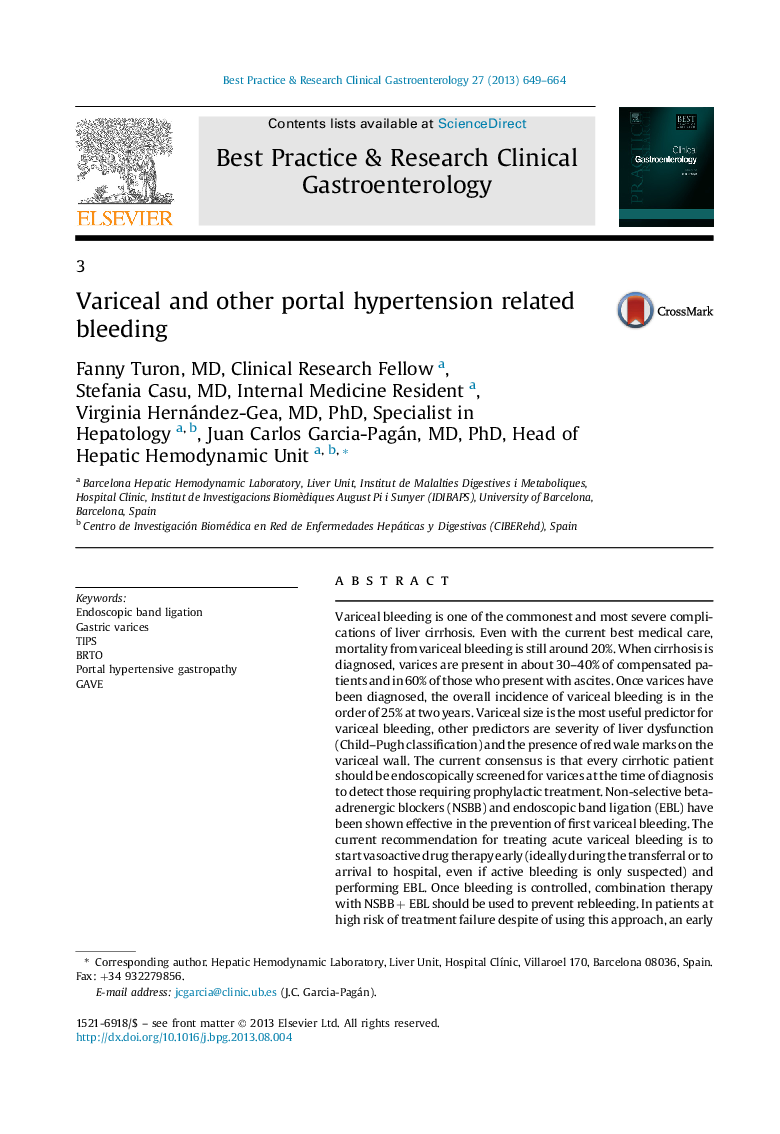| کد مقاله | کد نشریه | سال انتشار | مقاله انگلیسی | نسخه تمام متن |
|---|---|---|---|---|
| 3254156 | 1207182 | 2013 | 16 صفحه PDF | دانلود رایگان |

Variceal bleeding is one of the commonest and most severe complications of liver cirrhosis. Even with the current best medical care, mortality from variceal bleeding is still around 20%. When cirrhosis is diagnosed, varices are present in about 30–40% of compensated patients and in 60% of those who present with ascites. Once varices have been diagnosed, the overall incidence of variceal bleeding is in the order of 25% at two years. Variceal size is the most useful predictor for variceal bleeding, other predictors are severity of liver dysfunction (Child–Pugh classification) and the presence of red wale marks on the variceal wall. The current consensus is that every cirrhotic patient should be endoscopically screened for varices at the time of diagnosis to detect those requiring prophylactic treatment. Non-selective beta-adrenergic blockers (NSBB) and endoscopic band ligation (EBL) have been shown effective in the prevention of first variceal bleeding. The current recommendation for treating acute variceal bleeding is to start vasoactive drug therapy early (ideally during the transferral or to arrival to hospital, even if active bleeding is only suspected) and performing EBL. Once bleeding is controlled, combination therapy with NSBB + EBL should be used to prevent rebleeding. In patients at high risk of treatment failure despite of using this approach, an early covered-TIPS within 72 h (ideally 24 h) should be considered. Data on management of gastric variceal bleeding is limited. No clear recommendation for primary prophylaxis can be done. In acute cardiofundal variceal bleeding, vasoactive agents together with cyanoacrylate (CA) injection seem to be the treatment of choice. Further CA injections and/or NSBB may be used to prevent rebleeding. TIPS or Balloon-occluded retrograde transvenous obliteration when TIPS is contraindicated may be used as a rescue therapy.
Journal: Best Practice & Research Clinical Gastroenterology - Volume 27, Issue 5, October 2013, Pages 649–664